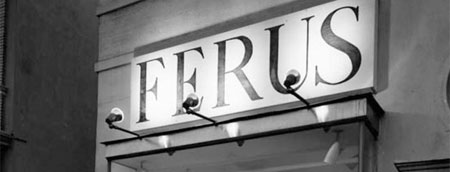Sometimes you can go home again, even to a home you never had. Or (with apologies to the New Yorker’s “block that metaphor”), you can take a trip down memory lane even if you never walked there in the first place. I didn’t live in Los Angeles in the 1950s or '60s or even '70s, but recently I’ve had several first-hand experiences of the LA art world from those years.
It was fun to hear the old-timers reminiscing about “back then,” trying to remember if they usually came in via the front or the side of the original Ferus Gallery—which opened in 1957 at 736A North La Cienega Boulevard—as we entered the recent recreation in exactly the same spot.
Masterminded by dealers Tim Nye and Franklin Parrasch, the recreation included early works by many of the original Ferus artists, including, I’m happy to say, a number who have been left out of the mythology that currently surrounds the gallery or who have otherwise been unfairly neglected by history (e.g. John Altoon, Jay DeFeo, and Sonia Gechtoff).
In 1958 Ferus moved across the street to 723 North La Cienega, the space made famous by the classic installation photograph of Andy Warhol’s first solo exhibition anywhere, his July 1962 show of Campbell’s soup can paintings put together by Irving Blum.
While I felt as if I knew the 723 space from that installation shot, it was intriguing to experience it “for real” in the current Billy Al Bengston show at Samuel Freeman in Santa Monica, where Sam has recreated (at what he calls “close to scale”) Bengston’s 1960 exhibition at Ferus (the artist’s second solo turn at the gallery). The show includes some of the actual paintings from the original exhibit, some very similar works from 1959–60, as well as an evocation of his 1970 Mizuno Gallery exhibition of dentos—paintings Bengston made in the second half of the 1960s on purposefully dented and otherwise distressed sheets of aluminum. Lit only by candles at Freeman as at Mizuno, the highly reflective, distorted yet beautiful surfaces of the dentos create an eerie and otherwordly atmosphere fit for a baroque church in the Old World. Mizuno Gallery’s history and impact, like the dentos in this distinctive installation, are still to a great degree in the shadows and warrant further research.
It was eye-opening for me to realize how small both Ferus spaces were—particularly compared to today’s many warehouse-sized galleries—yet how major the impact.
Carol S. Eliel, Curator of Modern Art
[Editor’s Note: want more Bengston or more Ferus? Head over to our Reading Room to read the out-of-print LACMA catalogues Billy and Late 50s at the Ferus.]




